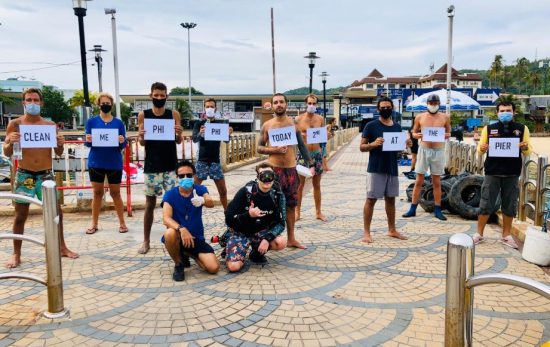Guest article written by PADI Master Scuba Diver Trainer, Robin Fewster
Sharks used to be plentiful in Thailand’s Pattaya and Sattahip areas. From black and white tipped reef sharks to bamboo sharks, Thailand had regular shark sightings in the early years of the 21st century. Unfortunately, this soon changed as spear, line and net fishing took their toll, leaving it extremely rare for divers to spot any of these species. Even bamboo sharks, which had previously been found in abundance, had virtually disappeared from coral reef systems.
A recently qualified dive instructor who had previous training in Reefcheck and Oceanquest reef rehabilitation, decided he would try reverse the disappearance of keystone grazing species such as parrotfish and surgeonfish. Unable to find any of these species alive in the fish markets, he decided to practice transport methodology on two juvenile bamboo sharks bought from a pet market in Bangkok. Following their successful release onto a Pattayan coral reef, he then found three living adult bamboo sharks in a seafood restaurant down the coast. Again, these marine animals were successfully released into local waters.
The project continued to progress and soon caught the attention of a retired official at the Department of Marine and Coastal Resources. The official provided encouragement and exposure to both Greenfins and IYOR 2018, allowing the project to diversify into releasing endemic yet depleted invertebrates such as horseshoe crabs, reef octopus and zebra cone snails. More than 100 bamboo sharks were released into waters surrounding nine islands in the naval protected area of Samaesan archipelago, thanks to support from Jomtien Dive Center.
Soon, the urgency of restoring bamboo shark populations was replaced with the need to focus on rhynchobatus australiae rays (commonly known as white-spotted shovelnose rays or even guitarfish), which were globally classified as critically endangered by the International Union of Conservation of Nature (IUCN) in 2019. Although these guitarfish are rare globally, they don’t benefit from legal protection in Thailand. As a result, fishing fleets are still known to regularly catch elasmobranchs while trawling for other species.
After many months of research and networking, the instructor was able to find a fishing boat captain who would keep his bycaught shovelnosed rays alive. With the assistance of members of the Thai navy, six juveniles were released into a no-take area near Sattahip naval base. So far, the project has tallied the release of 18 of these rare and iconic condrycthians. It is hoped that with the assistance of divers and concerned citizens, these species will become plentiful in the protected area.
Bycatch ecocide is a significant problem worldwide. In most industrialized countries, bycaught species are returned to the sea dead, but Thai fishing methods require edible bycatch to be kept alive. While this may be a more efficient procedure, the end result is the same for most of the species involved. We can, however, provide education to local communities so that they can change destructive fishing habits and help restock the underwater reefs we love so much.
Learn more about how you can help make a difference with Project AWARE.

